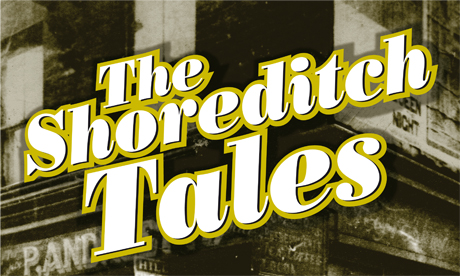The Shoreditch Tales

Carolyn Clark and Linda Wilkinson's new book
Not the kind you’d take to bed for a night of passion and excitement; but if you’re looking for some laughs and a couple of genuinely interesting hours, this one’s for you.
No, I’m not talking of the new friend you made in the pub last week, but of Carolyn Clark’s and Linda Wilkinson’s new book The Shoreditch Tales.
At 172 pages, most of which have illustrations of one size or another, the book’s written content is easy to get through in a few hours. It consists mainly of testimonies provided by Shoreditch locals (some of whom are real crackers) of their memories of the place, often in their own words.
Mark Brooks, the florist, recalls the regulars at the King’s Arms pub, which his grandfather owned: ‘one chap I remember had elephantiasis bollocks and he had to wear a skirt. Couldn’t get trousers over them, no way poor sod.’
A group of women at St Mary’s remember the ‘Hokey Pokey’ man selling ‘penny licks’ of ice-cream. They argue about the etymology of the name: a derivation of Hocus Pocus, perhaps, or a corruption of 19th century Italian gelato sellers’ cries of ‘O che poco!’ (Oh, how little!), referring to their prices.
The book is bejewelled with anecdotal gems such as these.
The ten chapters, which deal primarily with the themes of work, leisure and community, have a rather clunky chronology. However, this does not stop the reader from gaining a feeling for how Shoreditch has evolved over the years.
We read about Shoreditch’s early days as an area for grazing oxen and ploughing fields and its medieval development into a town. Theatres, marketplaces and tea gardens sprung up as wealthy folk flocked to the area.
Soon Shoreditch became a suburb proper, complete with Georgian houses and terraces. Then came the alms houses and asylums; then industrialisation and the sardine-tin working class houses it made necessary.
Around this time, Shoreditch took on the working-class connotations that it was to keep for quite some time, and which The Shoreditch Tales explores.
The carefully chosen photographs and illustrations add to the sense of ‘being there’ as the clock hands roll and roll, and the vivid first-hand descriptions of toy-stores and pawn shops and markets and milk men are excellently transcribed onto the page.
The book has a sentimentality that can at times make you cringe, and it does not have the eloquence of, say, Ian Sinclair’s Hackney, That Rose-Red Empire, or the breadth and depth of Peter Ackroyd’s London: A Biography. But to be fair, these qualities are not what the authors seek.
Their work is an honest, unpretentious folk history crammed with local voices and faces and products. After reading the book, you might sniff your clothes to see if the smells of cigarettes, ale, coal, hay, and market flowers have seeped out of the pages and stuck to you. Shoreditch bookworms will feel very much at home.
